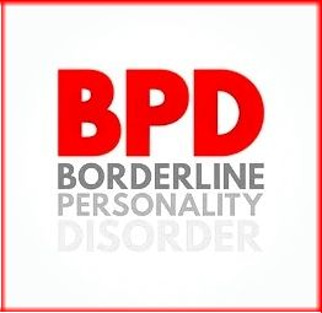Understanding the Nine Symptoms of BPD
G. Pacana
2/5/20256 min read
The American Psychiatric Association defines BPD as a pervasive pattern of instability in interpersonal relationships, self-image, and emotion, as well as marked impulsivity beginning by early adulthood and present in a variety of contexts, as indicated by five (or more) of the following symptoms.
Frantic efforts to avoid real or imagined abandonment
A pattern of unstable and intense interpersonal relationships characterized by extremes between idealization and devaluation (also known as "splitting")
Identity disturbance: Markedly or persistently unstable self-image or sense of self
Impulsive behavior in at least two areas that are potentially self-damaging (e.g., spending, sex, substance abuse, reckless driving, binge eating)
Recurrent suicidal behavior, gestures, or threats, or self-harming behavior
Emotional instability in reaction to day-to-day events (e.g., intense episodic sadness, irritability, or anxiety usually lasting a few hours and only rarely more than a few days)
Chronic feelings of emptiness
Inappropriate, intense anger or difficulty controlling anger (e.g., frequent displays of temper, constant anger, recurrent physical fights)
Transient, stress-related paranoid ideation or severe dissociative symptoms.
Let's take a closer look at each of the nine symptoms:
Frantic efforts to avoid real or imagined abandonment. Fear of abandonment is arguably the trademark symptom of BPD. PwBPDs have a constant fear that the people in their lives are going to leave them. They will often anticipate being abandoned, or they will misinterpret the actions of a loved one as abandonment, rejection, or leaving. This fear is likely linked to an early childhood experience of being separated from one or both parents, whether through divorce, sickness, death, or perhaps one parent leaving home.
The frantic, anxious, and irrational behavior that the PwBPD displays when they contemplate abandonment will oftentimes bring about fear and confusion in the sapwood's partner. Sometimes this frantic behavior on the part of the BPD will cause the very abandonment that the BPD is so terrified of. Separation or anticipation of separation from a loved one is a major trigger for a BPD and can send them into a panic, rage, or even a period of short-term psychosis.
A pattern of unstable and intense interpersonal relationships characterized by extremes between idealization and devaluation (also known as "splitting"). People with BPD do not have traditional, stable types of relationships; their relationships are more intense, dramatic, and unbalanced. There are several reasons for this. PwBPD tend to idealize people when they first meet them, and much like a young child, they put people up on a pedestal and only see their good qualities. PwBPD have a difficult time seeing “grays”; instead, they tend to see everything, including people, in black/white or as all good or all bad. Unlike other people, it is difficult for them to grasp the concept that good people can sometimes do “not so good things.” In a sense their world is divided into angels and devils.
This is referred to as “splitting.” If you are an angel and you happen to disappoint them, it's not like disappointing someone else; they take it very seriously, and you are likely to be knocked off the pedestal and relegated to the list of devils. PwBPD will often claim to love someone one day and hate them the next. Because of the trauma that many people with BPD experienced during their childhood, they never grasped the concepts known as whole object constancy and object permanence. In addition to their problem with idealizing people and object constancy, their abandonment fears and expectations also put relationships in jeopardy. Because BPD are always expecting to be abandoned, they will often push people away and sabotage good relationships.
Identity disturbance, markedly or persistently unstable self-image or sense of self. PwBPD generally do not have a good sense of who they are. This will manifest in things like changing their appearance, changing careers, changing interests or hobbies, and even changing their sexual orientation. All this experimentation and shifting is merely an attempt to “find themselves.” Human beings begin to get their sense of identity very early in life, beginning in infancy. Our mothers play a key role in how we learn to “know ourselves” and discover our identity.
Mothers are like mirrors for infants and children; when we look at our mothers, we begin to develop our sense of self. This process of an infant interacting with a mother is known as attunement. Attunement is a non-verbal visual dance between a mother and an infant. When a child fails to successfully attune with his mother because the mother is unavailable, indifferent, or ill in some way, the repercussions for the child are significant. One of the many consequences of an infant failing to attune is identity confusion or disturbance.
Impulsive behavior in at least two areas that are potentially self-damaging (e.g., spending, sex, substance abuse, reckless driving, binge eating) PwBPD, for a variety of reasons, including physiological differences in their brains, tend to be incredibly impulsive. The opposite of impulsive is reflective. To be reflective means to carefully weigh and consider the repercussions of our actions. Emotionally healthy people tend to be somewhere in between reflective and impulsive. But because the brains of BPD are different, they behave much more impulsively. This is particularly true when they have been disappointed or feel slighted in some way. PwBPD have a difficult time with self-soothing or self-calming. When they are in distress or crisis, they will often soothe in unhealthy ways. These may include abusing alcohol or drugs, spending excessive amounts of money, or engaging in risky sex, and sometimes even harming themselves.
Recurrent suicidal behavior, gestures, or threats, or self-harming behavior Suicidal ideation and behaviors are obviously one of the most serious symptoms of BPD. People with BPD, because of their lack of self-love and their severe emotional turmoil, spend an excessive amount of time thinking about suicide. Statistics reveal that eight in ten BPD will make at least one suicide attempt. Self-harming behavior, including self-cutting, self-burning, and other forms of mutilation, is very common among BPD. Why do they self-injure? There are many reasons, including to punish themselves, to “feel something,” and as a way of distracting themselves from their severe emotional pain.
Emotional instability in reaction to day-to-day events (e.g., intense episodic sadness, irritability, or anxiety usually lasting a few hours and only rarely more than a few days) Not only do BPD feel emotions more intensely, but they also go through dramatic emotional mood swings. Some BPD compare it to living on an emotional roller coaster. This is a big reason so many people with BPD are misdiagnosed as bipolar. BPD mood fluctuations are much different than those with bipolar disorder; they are more frequent and are certainly more intense. PwBPD experience mood swings in reaction to people and events. A negative exchange with a partner or even a minor altercation with a friend can send them into a period of deep sadness or anger.
Chronic feelings of emptiness The emptiness that BPD experience can be difficult to explain. Some have compared it to a void in the pit of their stomach and feeling like something is missing. It is not like being depressed; it is more like being lost or not having any meaning or sense of purpose.
Inappropriate, intense anger or difficulty controlling anger (e.g., frequent displays of temper, constant anger, recurrent physical fights) PwBPD go are prone to extreme bouts of anger. Much of it is related to the fact that their brains are wired slightly differently and that PwBPD have a difficult time regulating their emotions. Many things ranging from fear of abandonment, rejection, criticism, or slights can set them off.
Transient, stress-related paranoid ideation or severe dissociative symptoms This symptom is the reason this disorder was given the name “borderline.” During periods of extreme stress or extreme anxiety, PwBPD can cross over from neurosis into brief psychosis. This feeling tends to be different for everyone who experiences it. For some, it's feelings of paranoia. Others feel like they are outside of themselves, almost watching themselves as an outside observer. Others have described it as if they are floating on air, moving on strings, or being controlled remotely.
“I couldn’t trust my own emotions. Which emotional reactions were justified, if any? And which ones were tainted by the mental illness of BPD? I found myself fiercely guarding and limiting my emotional reactions, chastising myself for possible distortions and motivations. People who had known me years ago would barely recognize me now. I had become quiet and withdrawn in social settings, no longer the life of the party. After all, how could I know if my boisterous humor were spontaneous or just a borderline desire to be the center of attention? I could no longer trust any of my heart felt beliefs and opinions on politics, religion, or life. The debate queen had withered. I found myself looking at every single side of an issue, unable to come to any conclusions for fear they might be tainted. My lifelong ability to be assertive had turned into a constant state of passivity.”
― Rachel Reiland, "Get Me Out of Here: My Recovery from Borderline Personality Disorder"


Copyright 2025 Psycnet, All Rights Reserved
